Aeoniums Are Diverse And Easy To Grow – This Nurserywoman Explains How
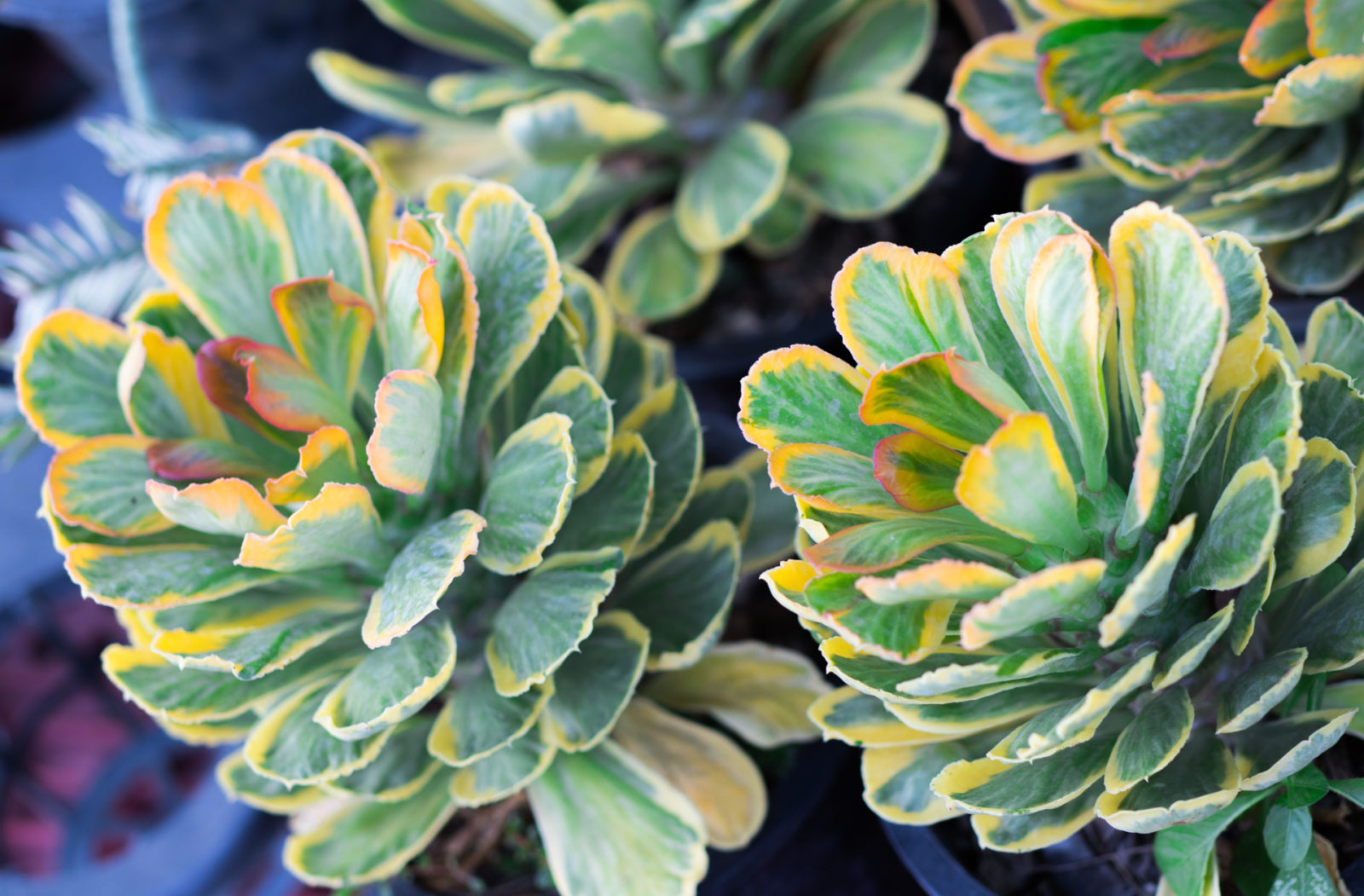
SUCCULENTS > AEONIUM

Elizabeth is a Permaculture Garden Designer, Sustainability Consultant and Professional Writer, working as an advocate for positive change. She graduated from the University of St. Andrews with an MA in English and Philosophy and obtained a Diploma in Applied Permaculture Design from the Permaculture Association.
Reviewed By DAN ORI

Dan has over 27 years’ under his belt caring for plants and gardens. Working as a Horticultural Instructor and Consultant, he draws on a diverse range of experience that includes working as a Head Gardener, Tree Surgeon, Garden Centre Trouble Shooter, and writer of academic papers. Dan has a Level 3 Diploma in Horticulture and is currently a candidate for the RHS’s most prestigious award – The Master of Horticulture.
Contributions From ROSIE PROSSER

Rosie works at Corseside Nursery in Pembrokeshire, Wales, where the team grows and sells a huge range of succulents.

With 30 years' experience working as a gardening expert on regional BBC radio and writing for various gardening publications, Martin Fish is one of the UK’s leading Horticulturists. He is an accredited RHS judge, previously ran the Harrogate Flower Show for 5 years and is now President of the Friends of the Valley Gardens in Harrogate. Martin is also a Fellow of the Chartered Institute of Horticulture.
IN THIS GUIDE
AEONIUM GUIDES
Succulents are very much on trend, and Aeoniums are among the popular succulents grown as houseplants in the UK and other temperate regions.
Aeoniums are subtropical succulents that can be incredibly easy to grow, making them a good choice for those looking for a relatively low-maintenance houseplant.
They can also potentially be placed outdoors in summer in a suitable spot.
These plants look great when placed alone in pride of place, and can also look good in combination with other succulents and cacti which like similar conditions, such as Crassula, Kalanchoe and Echeveria.
For this guide we’ve collaborated with Rosie Prosser, who helps run Corseside Nursery in Pembrokeshire, an online succulent retailer.
“Aeoniums are extremely diverse in their size, colour and growth habit and we find them very easy to care for”, Rosie shares.
“You can find Aeoniums in every colour of the rainbow and the genus features both dwarf and large varieties.
“They also grow fast and produce the most wonderful flowers. What’s not to love about that!”.
Overview
| Botanical Name | Aoenium spp. |
| Common Name(s) | Aoenium; Tree Houseleeks |
| Plant Type | Perennial Succulent |
| Native Area | Africa and Canary Islands |
| Hardiness Rating | H1C |
| Foliage | Evergreen |
| Flowers | Pink |
| When To Plant | May-June |
| When To Prune | Whenever it seems leggy |
Sunlight
Preferred
Full Sun or Partial Shade
Exposure
Exposed or Sheltered
Size
Height
0.5 – 1M
Spread
0.5 – 1M
Bloom Time
Summer
Soil
Preferred
Sand or loam
Moisture
Moist but well-drained
pH
Acidic to neutral
Aeoniums are mostly native to the Canary Islands, Madeira and Northern and Eastern Africa.1S. (n.d.). Aeonium. Wisconsin Horticulture. Retrieved March 9, 2023, from https://hort.extension.wisc.edu/articles/aeonium/
These plants can vary significantly in height, from a few centimetres up to 1m or so in height.
Sometimes, they are referred to as ‘Tree Houseleeks’.
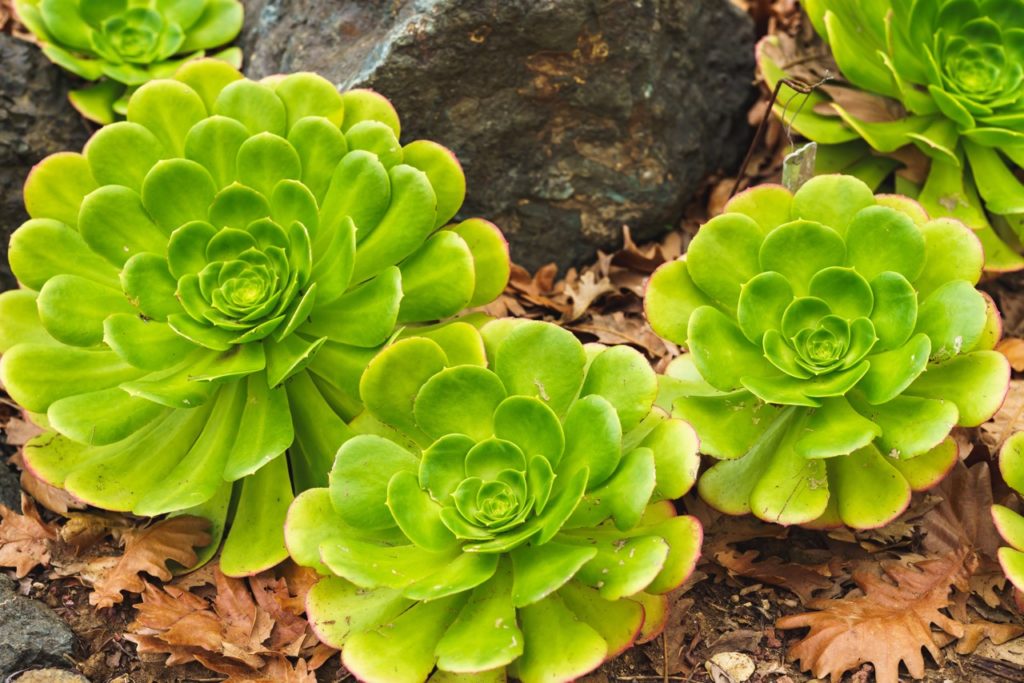
These plants have rosettes of glossy leaves, which often come in interesting shades of green or deep purple, with white, yellow and red variegation.
They are monocarpic, or in other words, they die after they flower, but with branching varieties, it is only the rosette that produced the flower that will die, and the rest of the plant can live on.
Why Grow Aeonium?
Aeoniums are, as mentioned above, very easy to grow and in fact, thrive on neglect.
So even if you are not the most green-fingered of gardeners, you should find it relatively easy to keep Aeonium alive.
“I’ve getting into aeoniums at the moment,” shares Garden Broadcaster Martin Fish.
“I’ve always grown them but I’ve got a little collection going now and it’s great!”
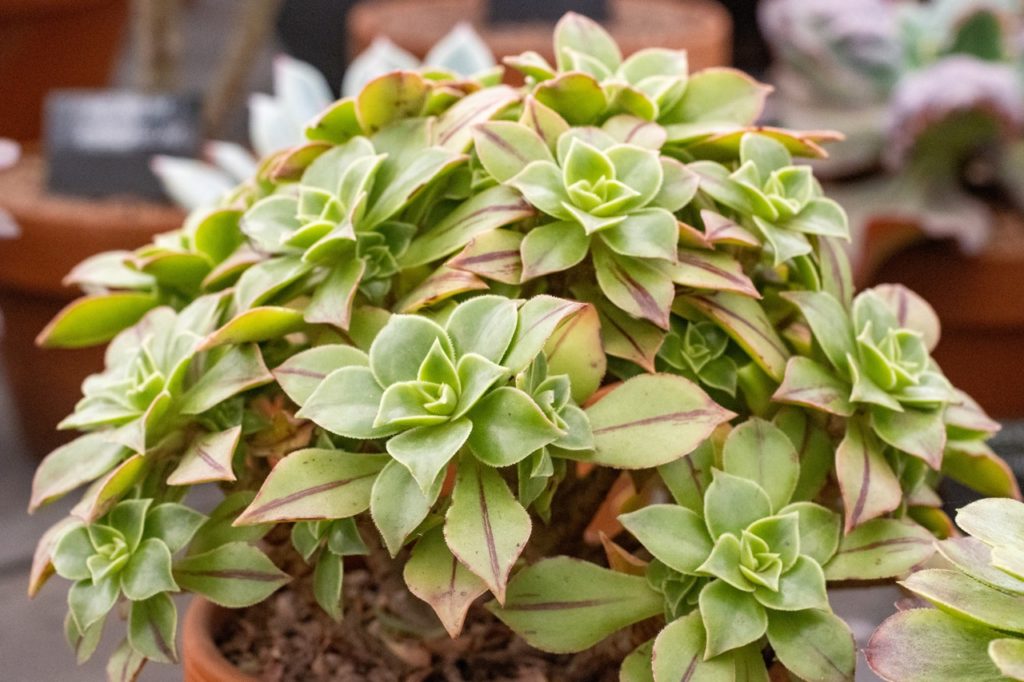
These are attractive houseplants, which can look great in mixed succulent displays, or be kept as individual potted plants in your home.
Though they are subtropical, Aeoniums can cope well with indoor conditions.
They are varied plants which can add immense visual interest and, like other houseplants, improve your living environment.
Common Varieties
At Corseside Nursery, Rosie and her team have grown their own hybrid, aptly named the ‘Pembrokeshire Promise’, which is available to buy from their store.
Many other Aeoniums cultivars have received an RHS Award of Garden Merit, so when choosing which Aeonium to grow, these options can be a good place to start.
AGM Aeoniums to consider are:
A. ‘Blushing Beauty’

A. haworthii

A. haworthii ‘Variegatum’

A. ‘Sunburst’

A. tabuliforme

A. ‘Zwartkop’
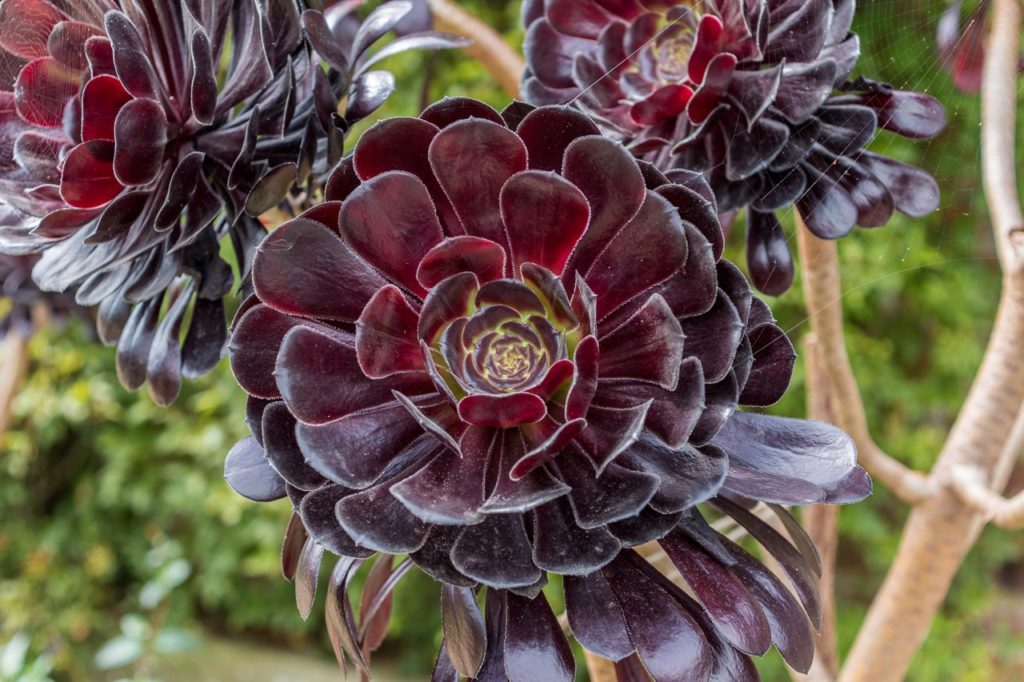
However, these varieties are just the beginning and there are plenty of other amazing cultivars to choose from.
There are some lovely compact hybrid forms with unusual variations in colour and form to explore, including some, such as ‘Medusa’, ‘Meiya’ and ‘Superbang’, with deep red and vibrant crimson foliage hues.
Start exploring the many cultivars and hybrids on offer and you may quickly need to find more space to house your ever-expanding succulent collection.
Where To Grow
Sunlight & Temperature
Aeoniums thrive in bright and dry conditions.
If they are grown indoors then it is important to give them a light and sunny spot.
Place them on a sunny south or west-facing windowsill.
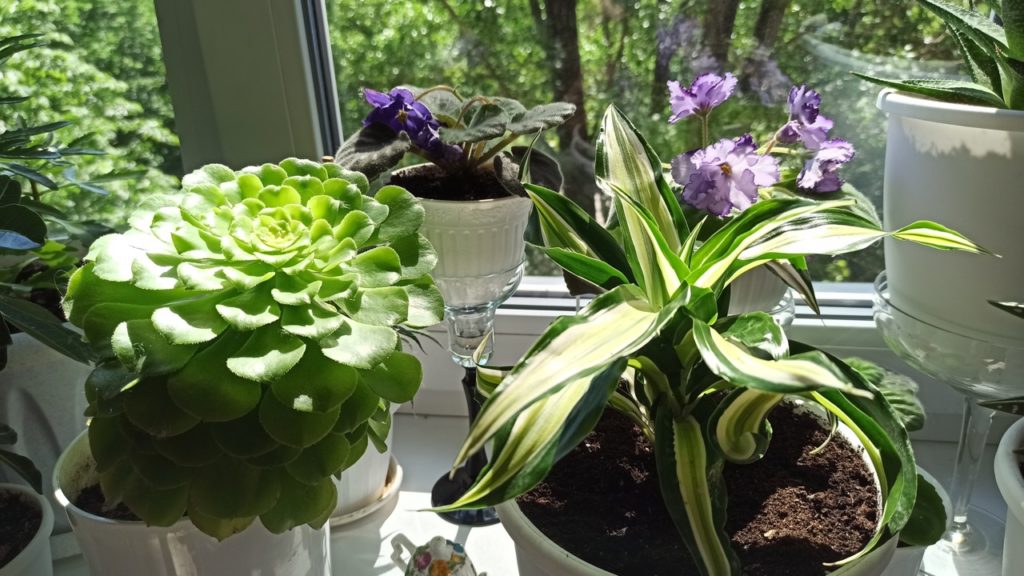
While many houseplants will not appreciate direct sunlight, Aeonium doesn’t mind it and will appreciate a spot that is as sunny and light as possible.
They can cope with low temperatures, though not frosts, and should not be exposed to temperatures below 5°C.
“You will find very respectable collections of Aeonium in public and botanic gardens across the UK,” recommends qualified Horticulturist Dan Ori.
“For those living in or travelling to Scotland, I can highly recommend a visit Inverewe – the National Trust For Scotland Aeonium collection.”
Soil Requirements
In certain parts of the UK, Aeoniums can be grown outdoors over the summer months.
They will thrive in a very well-drained location, either in free-draining soil or in a gravel garden.

These succulents can be a good choice in xeriscaping for dry areas where rainfall is low.
In wetter regions of the UK, they may be better grown in containers, placed outside only in the rain shadow of a wall or fence where they still get plenty of sun, but are somewhat protected from excessive rainfall.
Exposure
In terms of exposure, Aeoniums are unfussy.
They can cope with a windy location because their foliage is tough enough to withstand winds.
This means that they can be a good choice for a coastal garden.
Planting Aeonium
Creating suitably free-draining conditions is the most important thing, whether growing in containers or in the ground.
A lack of good drainage will cause issues for the plant and when the growing medium cannot dry out between waterings, the roots and stem may rot.
If you are planting Aeonium in a container, choose a container which is porous, and which has good drainage to allow excess water to drain away.
These and other succulents thrive in terracotta pots, which are permeable and allow the soil to dry out more between waterings.
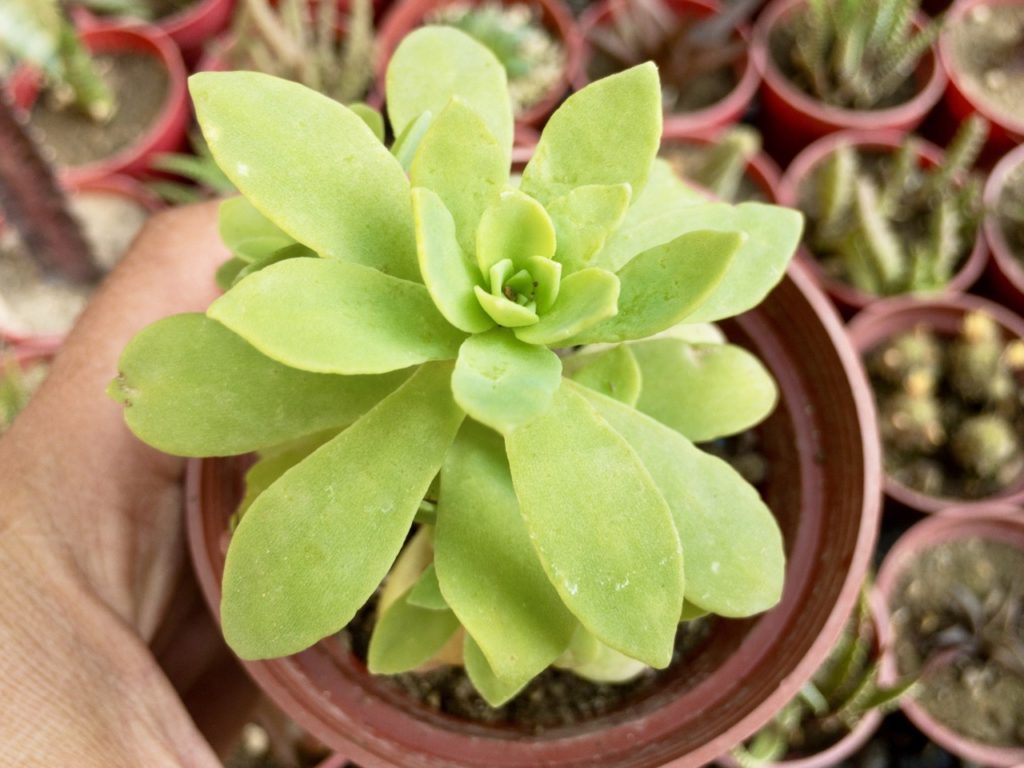
Of course, the pot you select should have a drainage hole at the base.
A layer of crock, gravel or grit should also be added at the base of the pot to further aid in drainage.
The container you choose for an Aeonium should be the same size as, or only very slightly bigger than the rootball of the plant you are planting.
A larger pot will be more likely to become waterlogged since the roots will not permeate all the potting mix within it.
To ensure adequate drainage, Rosie explains that the potting mix that you select is also very important:
“A good free-draining pot and soil can also support good water management. It is important to make sure the water can drain away easily from the roots of the plants.
“This can be achieved by mixing larger particles into your normal soil, such as grit, crushed eggshells or perlite”.
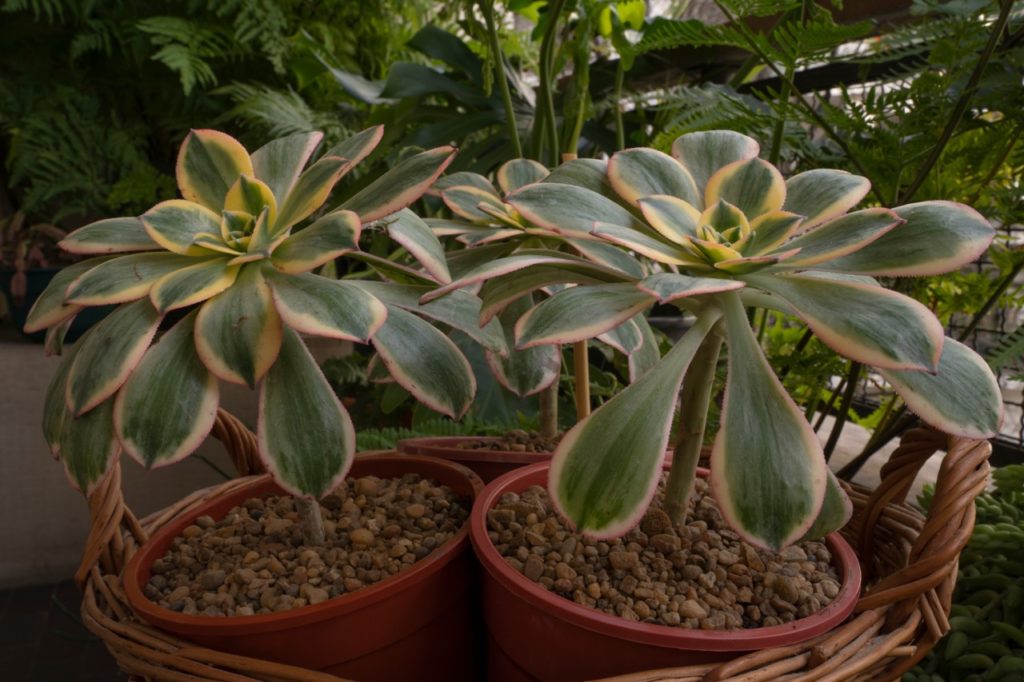
Alternatively, you can look to mix 60% peat-free multipurpose compost with 40% horticultural grit or sand.
Once you have placed your Aeonium within this growing medium, sprinkle a 1cm layer of horticultural grit on top.
This will further help to ensure that the stem does not rot.
If planting outdoors in free-draining soil, a similar layer of grit or gravel on the surface of the soil can also be beneficial.
When moving pots with flat-topped Aeonium types outdoors, it is a good idea to place the pots at an angle so that any excess rainwater can drain off more easily.
Aeonium Plant Care
As we’ve already discussed, Aeoniums are very easy to care for, and keeping them as houseplants won’t take up a huge amount of your time.
Watering
When growing Aeoniums indoors, it is helpful to remember that in their native range, they experience long hot, dry periods, with occasional heavy downpours, as Rosie explains:
“Overwatering is a big hitter when it comes to Aeonium care mistakes. Succulents store water in their thick juicy leaves.
“In their natural habitat, they have evolved to deal with droughts and monsoons.
“We encourage our customers to try and mimic that; give them a big dose of water, then leave them to dry out completely before watering again”.
Watering well though infrequently is better than watering a little more frequently.
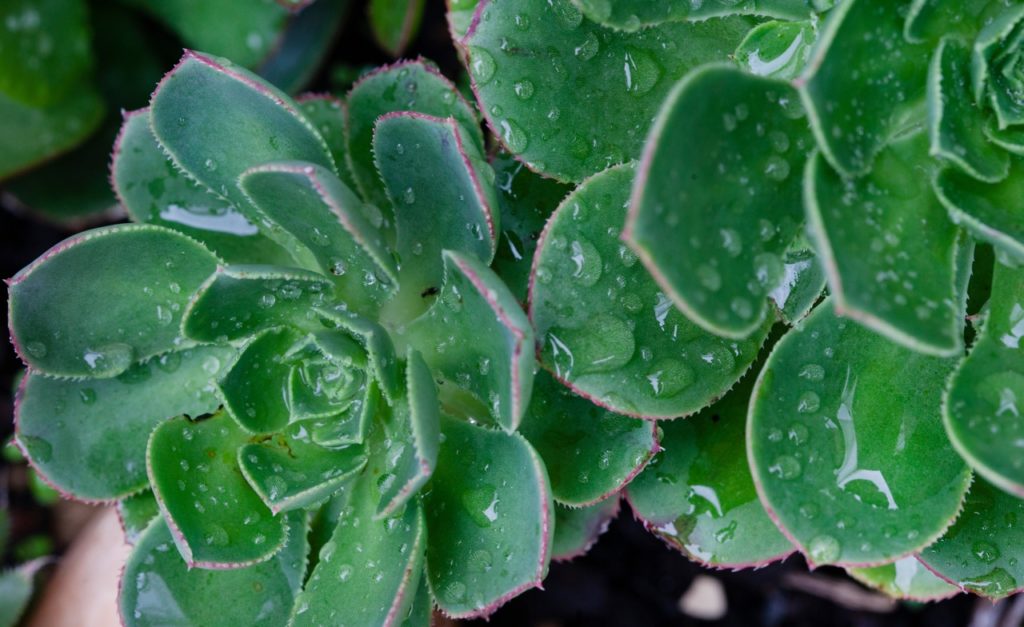
Aeoniums plants are in active growth during the spring and autumn months when the growing conditions are ideal.
In summer, during hot periods, and in the winter, they will typically go dormant, and so should be watered only sparingly during these times.
If outdoors, Aeoniums should receive all the water they need from natural rainfall.
Most Aeonium problems are caused by overwatering or insufficient drainage.
Feeding
It is not always strictly essential to feed Aeoniums, but plants can benefit from a half-strength organic liquid feed once a month from winter to late spring.
Propagating
Taking cuttings from an Aeonium plant is a great way to ensure survival post-flowering and to propagate new plants.
Take Aeonium cuttings in spring, selecting some young and slender shoots which will be easier to root and have more vigour than older plant matter.
Each cutting should be around 10cm in length.
Take these cuttings and place them on a warm and dry windowsill for a few days until the cut has formed a callus.
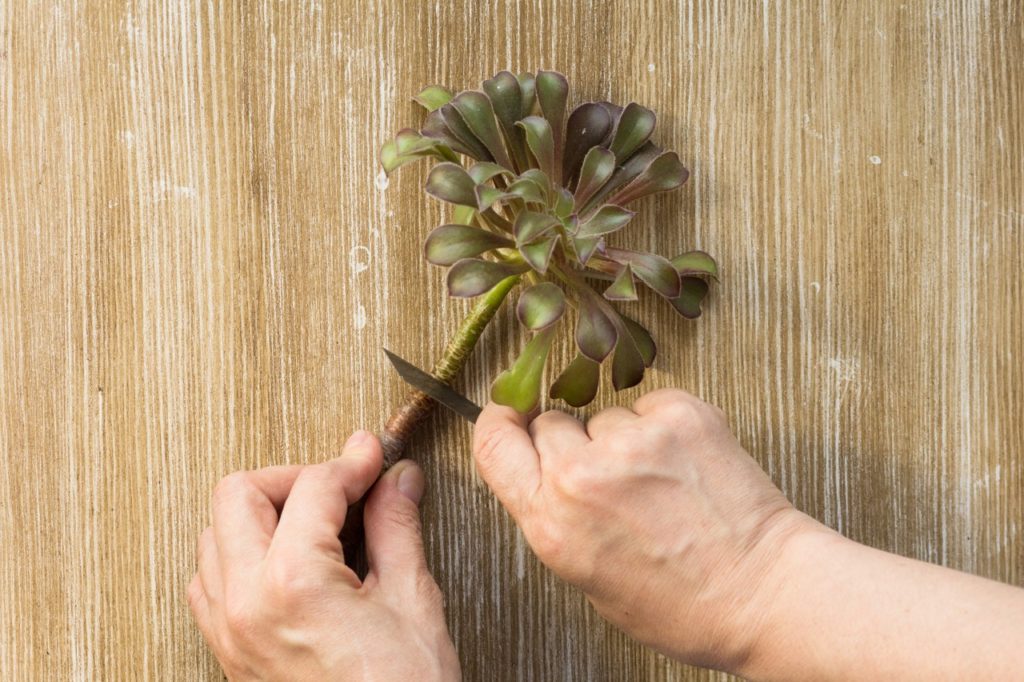
Next, insert your cuttings into pots with half potting compost and half grit, making sure that around half of the stem is above soil level.
Sprinkle grit over the surface of the soil and leave the cuttings uncovered in a bright spot where temperatures between 18-20°C can be maintained.
Water sparingly until the cuttings have rooted, which should be in a couple of weeks.
As long as you get the conditions and watering right, your Aeonium plant should thrive, and be a hassle-free addition to your home or garden.
References
- 1S. (n.d.). Aeonium. Wisconsin Horticulture. Retrieved March 9, 2023, from https://hort.extension.wisc.edu/articles/aeonium/
